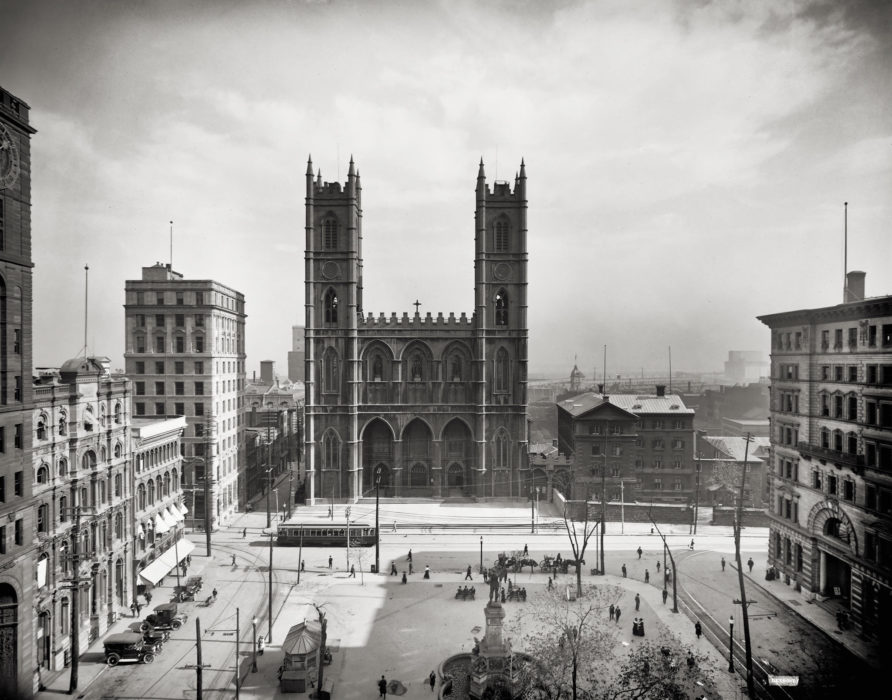AS A TRAVELER, HENRY David Thoreau wrote that what he got from his visit to Canada was a cold. Undeterred by a week of wetter and cooler than average Montreal weather, ‘Abdu’l-Bahá saw a different part of Montreal practically every day of his visit. The unpredictable weather did not stop him from seeing the city between his many public talks and appointments with visitors.
On ‘Abdu’l-Bahá’s first afternoon in Montreal, Sutherland Maxwell took him and a small party for a carriage ride around town. They drove past the Unitarian Church where ‘Abdu’l-Bahá would speak the following morning and through the McGill University campus. They then went to one of the oldest and grandest Catholic churches in the city, Notre Dame Basilica, on Place d’Armes square in the historic Old Port. The party stopped here and ‘Abdu’l-Bahá praised the building. Mahmúd-i-Zarqání said that after they had left the church, ‘Abdu’l-Bahá turned to the party and said, “Behold what eleven disciples of Christ have accomplished, how they sacrificed themselves! . . . When a person is detached, he is capable of revolutionizing the whole world.”
A couple of days later, ‘Abdu’l-Bahá was traveling between The Windsor Hotel and Pine Avenue by tram, rather than by carriage, to cut down on expenses. On September 3, he spent a full morning and early afternoon at the hotel meeting ministers and academics, including the principal of McGill University, Dr. William Peterson, as well as a pastor from an African-Canadian congregation on St. Antoine Street. Mahmúd said that ‘Abdu’l-Bahá “was completely exhausted,” but rather than resting, he set off alone for a walk “to refresh himself.”

‘Abdu’l-Bahá then got on a streetcar heading outside of the downtown, and soon transferred to a second one. Historian Will Van Den Hoonaard has identified unsubstantiated reports that ‘Abdu’l-Bahá headed east and may have spent some time in Lafontaine Park, but concludes that no one can be really sure since ‘Abdu’l-Bahá was alone. He did not know this part of the city, nor the tram routes and spoke neither English nor French. After a while, ‘Abdu’l-Bahá hailed a taxi, but was unable to tell the driver the name of his hotel. Mahmúd relates that he returned, “with his hair dishevelled and his smiling face” to tell the story of how he got lost and how he guided the driver to “go straight on” and “by chance I reached my hotel amongst all these hotels.”
That same night, ‘Abdu’l-Bahá spoke on economics to Montreal’s Socialists. The following morning, “for a change of routine,” ‘Abdu’l-Bahá went up to the top of Mount Royal, taking a steam-driven cable car that climbed an inclined railway track up to a lookout. It was “a magnificent sight,” wrote Mahmud, “with a view of the whole city stretched before us.” As they stood on the top of Mount Royal, the papers that had reported the previous evening’s talk were translated and read aloud to ‘Abdu’l-Bahá.
After his talk at St. James’s, ‘Abdu’l-Bahá caught a cold. His planned departure the following day was postponed so that he could recover. At that point during his Montreal visit, he no longer gave large public talks but, from September 6 to 8, he continued to receive visitors at the Hotel Windsor, to answer letters, and to give regular talks at the Maxwell home.






